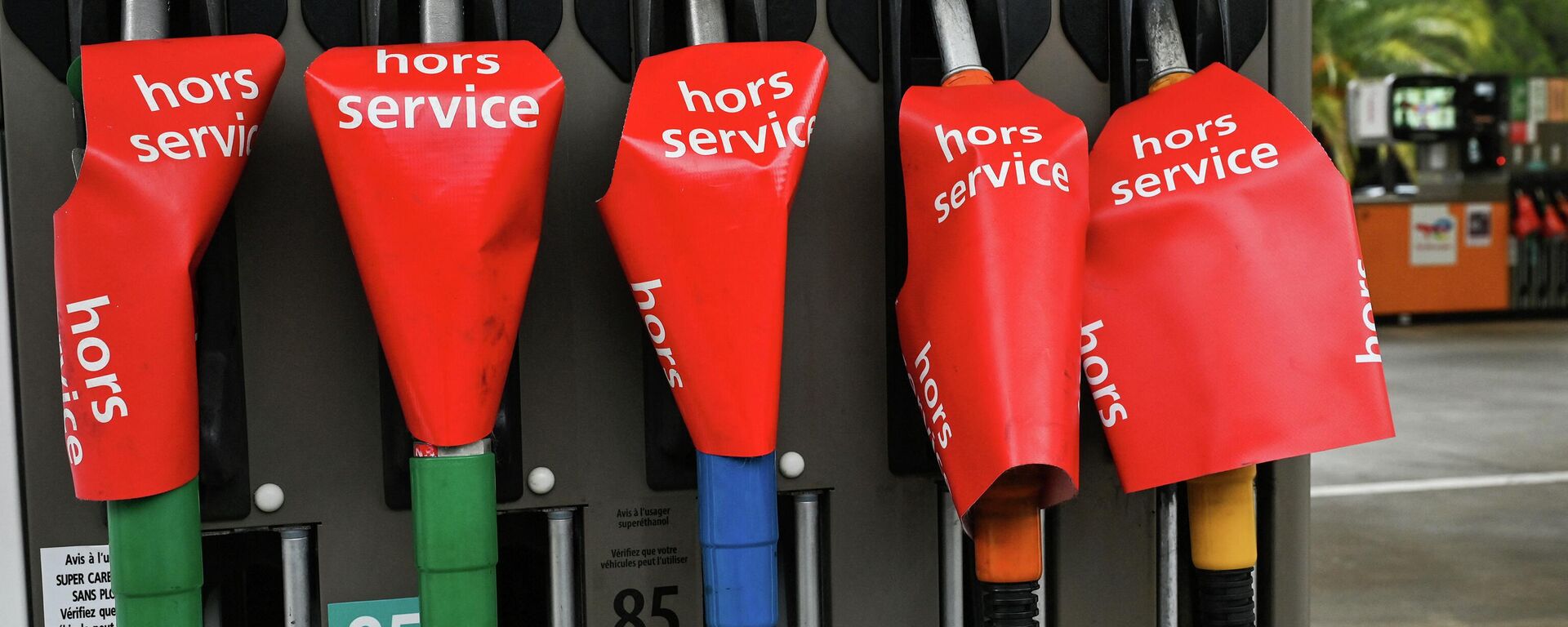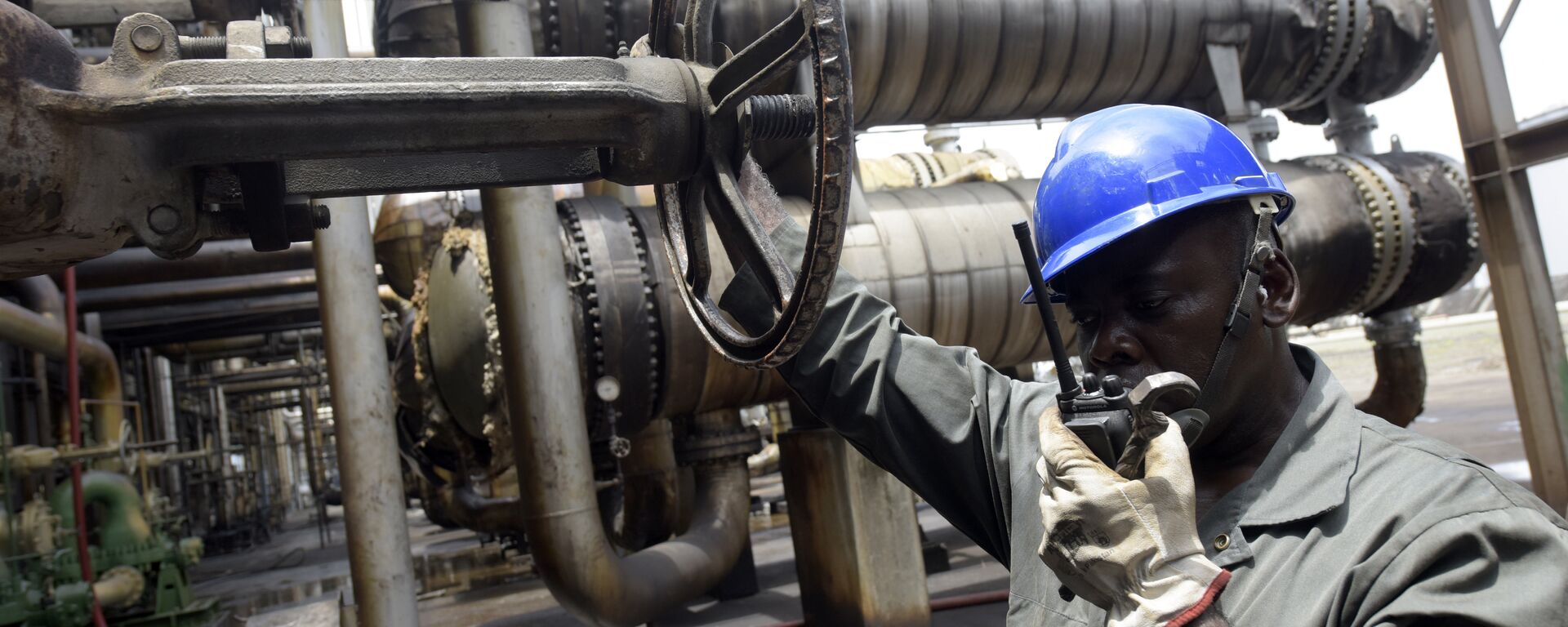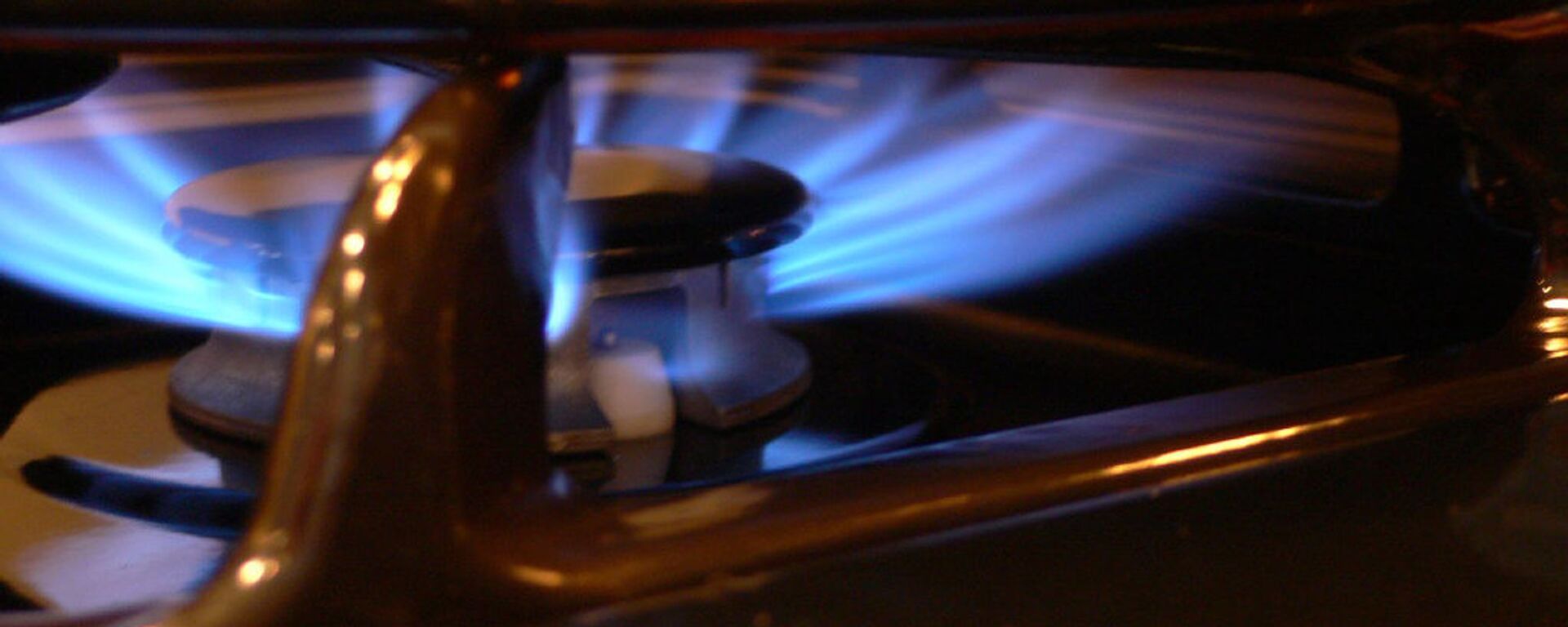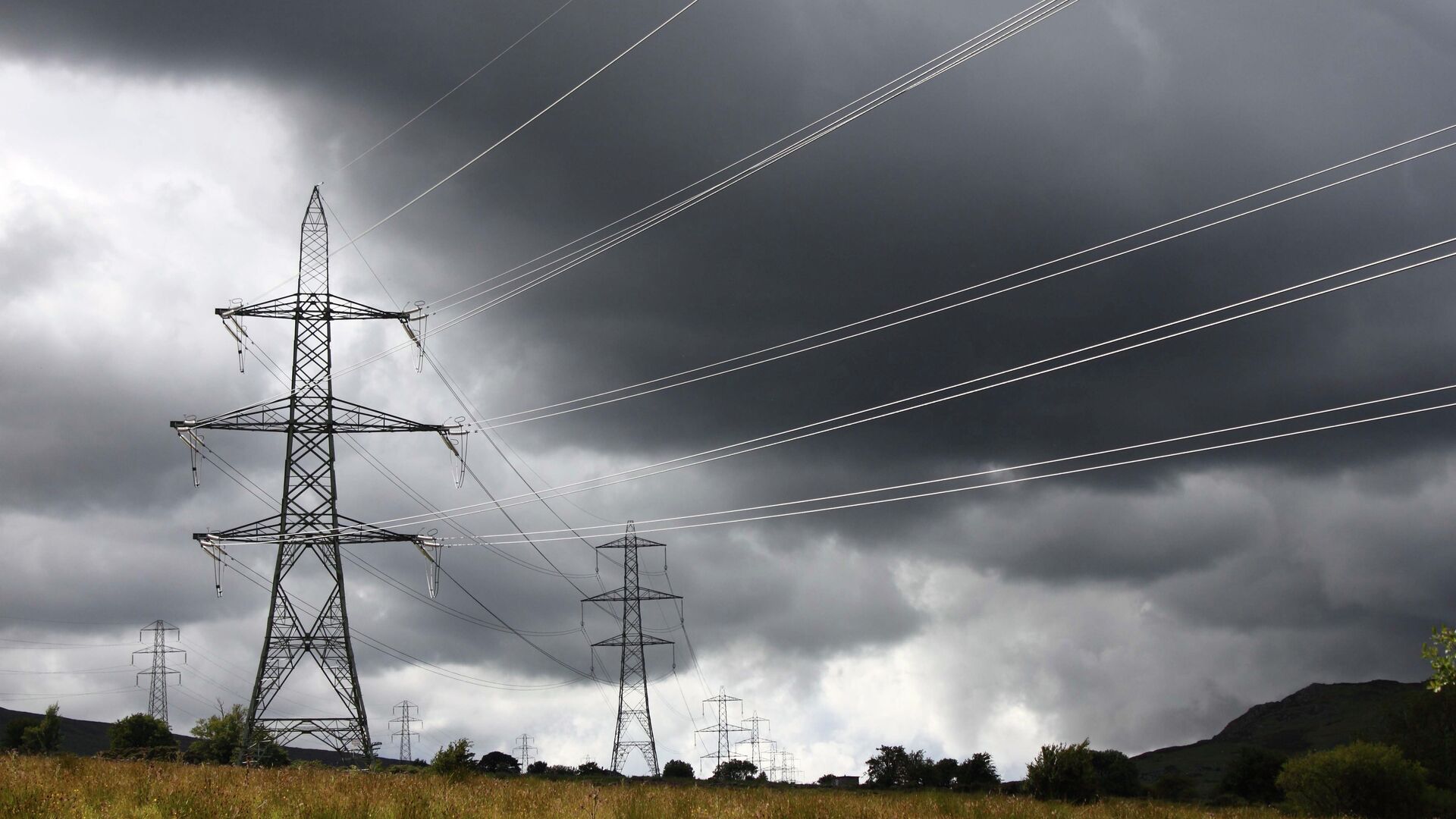https://sputnikglobe.com/20221008/zaporozhye-nuclear-plant-shelling-just-cost-kiev-20-of-its-traditional-sources-of-electricity-1101643030.html
Zaporozhye Nuclear Plant Shelling Just Cost Kiev 20% of Its Traditional Sources of Electricity
Zaporozhye Nuclear Plant Shelling Just Cost Kiev 20% of Its Traditional Sources of Electricity
Sputnik International
After falling into the Russian military’s hands in March, the Zaporozhye Nuclear Power Plant (ZNPP) has been subjected to months of shelling attacks by... 08.10.2022, Sputnik International
2022-10-08T17:22+0000
2022-10-08T17:22+0000
2022-10-19T20:57+0000
energy crisis in europe
electricity
energy
russia
zaporozhye npp
ukraine
https://cdn1.img.sputnikglobe.com/img/101333/20/1013332018_0:246:4744:2915_1920x0_80_0_0_68312d0b67f874fecd234b95d07ff807.jpg
Ukraine’s national energy grid has lost access to about a fifth of its traditional sources of electricity supplies, with Zaporozhye regional government member Vladimir Rogov announcing Saturday that Ukrainian shelling had damaged the final high-voltage transmission line linking the NPP to the grid.The plant has switched to operation using diesel generators, he added.International Atomic Energy Agency chief Rafael Grossi announced later in the day Saturday that he would visit Russia and Ukraine “to agree on a nuclear safety and security protection zone around the plant,” and dubbed the shelling which struck the plant’s sole source of external power a “tremendously irresponsible” action. As per established IAEA policy, Grossi did not name the culprits behind the shelling attacks.Also on Saturday, the Russian military reported that the city of Energodar and the ZNPP were shelled twice by the Ukrainian military using Grad multiple launch rocket systems, with a total of 15 rockets fired from the Ukrainian-controlled settlement of Marganets in Dnepropetrovsk region.Saturday morning’s shelling attacks came just two days after Ukrainian President Volodymyr Zelensky warned that Kiev may soon be forced to stop selling electricity supplies to Europe.“We won’t have enough to heat our homes. And that time is approaching,” Zelensky said, speaking to Australian officials on Thursday. “We talk all the time about the risks of blackouts. It could be days, weeks,” he added.The ZNPP and its six VVER-1000/320 reactors, ordinarily generating up to 38,000 Gigawatt hours (GWh) of electrical power, once accounted for about 20 percent of Ukraine’s electricity needs, and some 45 percent of the electricity generated by the nation’s nuclear power plants.The Russian-administered portion of Zaporozhye region became part of the Russian Federation late last month following a status referendum held between September 23-27 in which 93 percent of residents voted in favor of joining Russia.Friday’s self-inflicted snipping of the ZNPP’s final link to Ukraine’s grid threatens to undermine Zelensky’s ambitious energy swap plans. Throughout the spring and summer, he proposed trading electricity generated by nuclear power for natural gas, and sought to woo foreign investors by selling Ukraine as an untapped energy source that could help Europe address its shortages.As recently as last month, Zelensky boasted that Ukraine could become a hub for “green energy” in Europe by increasing electricity exports to EU countries. “For this [to take place], it is important that the ZNPP returns to a safe mode of operation and remains connected to the Ukrainian energy grid,” he said. “Even now, with all the difficulties, we can export such a volume of electricity that corresponds to at least 8 percent of the consumption of entire Italy,” he said.“Our country has a huge natural potential for developing opportunities in green energy and in production of green hydrogen. This is a potential of tens, and possibly hundreds of green gigawatts of electric power and millions of tons of green hydrogen,” Zelensky added.At the same time, Zelensky warned Ukrainians to brace for the “most difficult” winter in the country’s history, announcing a halt in gas and coal exports, and advising the public to stock up on warm clothes and blankets to prepare for the cold season.Kiev’s European sponsors are themselves bracing for unprecedented energy shortages sparked by the shortsighted decision to cut themselves off from Russian oil, gas, electricity and coal supplies, and cemented by the unprecedented sabotage attacks against the Nord Stream pipelines.Last week, European gas infrastructure operator association GIE warned that gas offtake from the region’s underground storage sites had recently begun to exceed supplies being put into storage. Separately, the International Energy Agency indicated that storage would drop to five percent of capacity by February if Russian supplies remained cut off and deliveries of LNG were not significantly expanded.With Europe facing energy shortages of its own and unlikely to share, and Kiev slashing its own access to Russian-sourced energy, it’s unclear how Ukraine will make up for the shortfalls this winter. Even before the escalation of the security crisis this February, successive pro-Western governments’ IMF-authored reforms had driven many Ukrainians into energy poverty, with millions resorting to wood and peat-burning stoves.
https://sputnikglobe.com/20221007/france-releases-strategic-oil-reserves-as-15-of-gas-stations-short-on-fuel-1101603371.html
https://sputnikglobe.com/20221001/western-imposed-green-agenda-would-cripple-africas-energy-security-energy-expert-warns-1101420605.html
https://sputnikglobe.com/20221006/eu-may-face-energy-price-explosion-supply-fall-over-8th-sanctions-package-professor-says-1101575237.html
russia
ukraine
Sputnik International
feedback@sputniknews.com
+74956456601
MIA „Rossiya Segodnya“
2022
News
en_EN
Sputnik International
feedback@sputniknews.com
+74956456601
MIA „Rossiya Segodnya“
Sputnik International
feedback@sputniknews.com
+74956456601
MIA „Rossiya Segodnya“
electricity, energy, russia, zaporozhye npp, ukraine
electricity, energy, russia, zaporozhye npp, ukraine
Zaporozhye Nuclear Plant Shelling Just Cost Kiev 20% of Its Traditional Sources of Electricity
17:22 GMT 08.10.2022 (Updated: 20:57 GMT 19.10.2022) After falling into the Russian military’s hands in March, the Zaporozhye Nuclear Power Plant (ZNPP) has been subjected to months of shelling attacks by Ukrainian forces. Late last month, the last of the plant’s six reactors was disconnected from the grid to minimize risks caused by incessant bombardment.
Ukraine’s national energy grid has lost access to about a fifth of its traditional sources of electricity supplies, with Zaporozhye regional government member Vladimir Rogov announcing Saturday that Ukrainian shelling had damaged the final high-voltage transmission line linking the NPP to the grid.
“Last night, the last high-voltage power transmission line connecting the plant to the power system of Ukraine was damaged and disconnected as a result of shelling by Ukrainian forces,” Rogov said.
The plant has switched to operation using diesel generators, he added.
International Atomic Energy Agency chief Rafael Grossi announced later in the day Saturday that he would visit Russia and Ukraine “to agree on a nuclear safety and security protection zone around the plant,” and dubbed the shelling which struck the plant’s sole source of external power a “tremendously irresponsible” action. As per established IAEA policy, Grossi did not name the culprits behind the shelling attacks.
Also on Saturday, the Russian military reported that the city of Energodar and the ZNPP were shelled twice by the Ukrainian military using Grad multiple launch rocket systems, with a total of 15 rockets fired from the Ukrainian-controlled settlement of Marganets in Dnepropetrovsk region.
Saturday morning’s shelling attacks came just two days after Ukrainian President Volodymyr Zelensky warned that Kiev may soon be forced to stop selling electricity supplies to Europe.
“We won’t have enough to heat our homes. And that time is approaching,” Zelensky said, speaking to Australian officials on Thursday. “We talk all the time about the risks of blackouts. It could be days, weeks,” he added.

7 October 2022, 11:10 GMT
The ZNPP and its six VVER-1000/320 reactors, ordinarily generating up to 38,000 Gigawatt hours (GWh) of electrical power, once accounted for about 20 percent of Ukraine’s electricity needs, and some 45 percent of the electricity generated by the nation’s nuclear power plants.
The Russian-administered portion of Zaporozhye region became part of the Russian Federation late last month following a status referendum held between September 23-27 in which 93 percent of residents voted in favor of joining Russia.
Friday’s self-inflicted snipping of the ZNPP’s final link to Ukraine’s grid threatens to undermine Zelensky’s ambitious energy swap plans. Throughout the spring and summer, he
proposed trading electricity generated by nuclear power for natural gas, and sought to woo foreign investors by selling Ukraine as an untapped energy source that could help Europe address its shortages.
As recently as last month, Zelensky
boasted that Ukraine could become a hub for “green energy” in Europe by increasing electricity exports to EU countries. “For this [to take place], it is important that the ZNPP returns to a safe mode of operation and remains connected to the Ukrainian energy grid,” he said. “Even now, with all the difficulties, we can export such a volume of electricity that corresponds to at least 8 percent of the consumption of entire Italy,” he said.
“Our country has a huge natural potential for developing opportunities in green energy and in production of green hydrogen. This is a potential of tens, and possibly hundreds of green gigawatts of electric power and millions of tons of green hydrogen,” Zelensky added.

1 October 2022, 14:58 GMT
At the same time, Zelensky warned Ukrainians to brace for the
“most difficult” winter in the country’s history, announcing a halt in gas and coal exports, and advising the public to stock up on warm clothes and blankets to prepare for the cold season.
Kiev’s European sponsors are themselves bracing for unprecedented energy shortages sparked by the shortsighted decision to cut themselves off from Russian oil, gas, electricity and coal supplies, and cemented by the unprecedented sabotage attacks against the Nord Stream pipelines.
Last week, European gas infrastructure operator association GIE
warned that gas offtake from the region’s underground storage sites had recently begun to exceed supplies being put into storage. Separately, the International Energy Agency indicated that storage would drop to five percent of capacity by February if Russian supplies remained cut off and deliveries of LNG were not significantly expanded.
With Europe facing energy shortages of its own and unlikely to share, and Kiev slashing its own access to Russian-sourced energy, it’s unclear how Ukraine will make up for the shortfalls this winter. Even before the escalation of the security crisis this February, successive pro-Western governments’ IMF-authored reforms had driven many Ukrainians
into energy poverty, with millions resorting to wood and peat-burning stoves.

6 October 2022, 13:37 GMT





